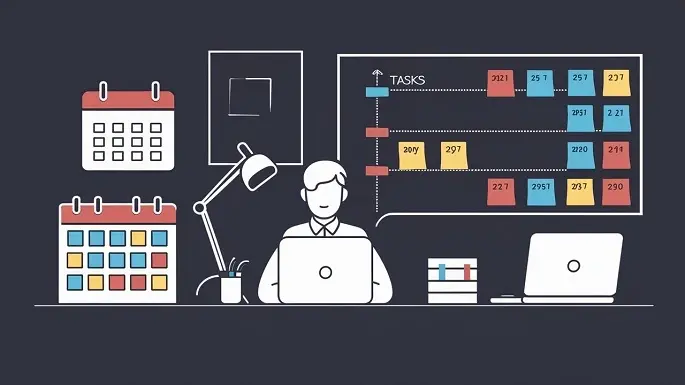If you consider the above-stated points, you will agree with me that time is one of the most important resources available to mankind. Again, it is true that time defines life, that is, how we manage our time defines how we live our lives. That is why just knowing where time is spent and how to organize it more effectively is of great value.
Time mapping is an expert tool to help you do just that. If you physically draw a plan of what occupies most of your time now and what you want to devote your time to in the future, then that’s taking control of your schedule.
Stay with me as I provide you with a detailed guide to time mapping and how you can map your time with the use of the template below.
What is Time Mapping?
It is a process of identifying where one spends his or her time to identify if the time so spent is useful or if the time spent is in line with goals and objectives. The whole purpose of this is to dissect all the things you do and all the activities you engage in into time segments so that you can start to be able to tell how you are spending your time.
When you know the amount of time that has been spent on any task, it becomes easier to decide how to allocate your hours in the future. The purpose is to manage and plan time according to priorities rather than waste time on emergent issues that may come up.
Benefits of Time Mapping
Mapping out your time allocation offers many advantages: Mapping out your time allocation offers many advantages:
- Reduces the sense of time loss – In many instances, people do not have time Awareness is heightened concerning where time goes. Time mapping emphasizes current behaviors and patterns that are not conducive to productivity.
- Hints at incompatibility of goals and time spending – Often, what we do does not correlate with what we want to achieve. This can be explained with mere numbers; it looks different when numbers are presented side by side.
- Fosters purposeful and agentive planning for time – With direction comes the chance to decide on the future use of time selectively, not reactively.
- Provides an insight into the balance of different aspects of life – Thus, if all the life domains – personal, family, health, career, etc. are represented on the wheel, it becomes easier to identify which ones are over-represented or under-represented.
- Helps be more focused and productive – Reducing the amount of time spent on things that do not contribute to a goal helps reach goals more quickly.
This activity involves the establishment of a time map that will be used to schedule all the activities that are required to make the success of the project possible.
Follow these steps to create your time map:
1. Select your time frame. An example plan could be a week with each hour accounted for, but you could also plan on an average day or with a daily breakdown of up to a month. It should be long enough to provide a good glimpse of the topic or area you are studying but not too long to give an overload of information.
2. Record your activities. Cross out the list of the segments of 24 hours above and write how you spent that hour, chronologically – backward. Be truthful to admit how often one catches himself or herself on social media, watching TV, etc.
3. Categorize activities. Go through your completed map and highlight or label activities by life domain: Occupation/Business, Home/Children/Spouse, Physical, Recreation/Entertainment, Development/ Education/Training, Social interaction, Personal/ Self-nurturing, Disposables.
4. Analyze your time allocation. Evaluating the time you spent in each domain, what percent of your time was consumed in each? Is this a representation of what you want to value or achieve in life? Did the positions present any issues of incongruency to be resolved?
5. Re-map future time allotment. Your analysis: Your idea on hours redistribution according to priorities. Plan the weeks in such a way that they are most beneficial and efficient.
6. Implement boundaries and systems. Make sure that there are some physical, electronic, or other blocks on the calendar to assist with this process in the future. Get people to commit you to achieve results as well.
Time Mapping Template
Recording the tasks in detail on an hour-to-hour basis of your day is useful in the sense that it offers a basic form of data. Use this template to map your time:
Time Mapping Template
Hour Monday Tuesday Wednesday Thursday Friday Saturday Sunday
6 am
7 am
8 am
9 am
10 am
11 am
12 pm
1 pm
2 pm
3 pm
4 pm
5 pm
6 pm
7 pm
8 pm
9 pm
10 pm
11 pm
12 am
In the spaces provided below, write down the tasks and activities that you have planned for each of the hours below. At the end of each one, spot high lights in the life domains and decide if more time is being spent in a particular area than desirable. Does it advise your template of any necessary changes? Applying the information, adjust the planned future hours.
It is important to note that as you go through the time mapping process, you can easily repeat the process to fine-tune the time mapping and thus optimally allocate the scarce resource of time. Use this guide and template to proactively and deliberately determine how you will invest your hours to achieve your goals and align with what matters to you.



